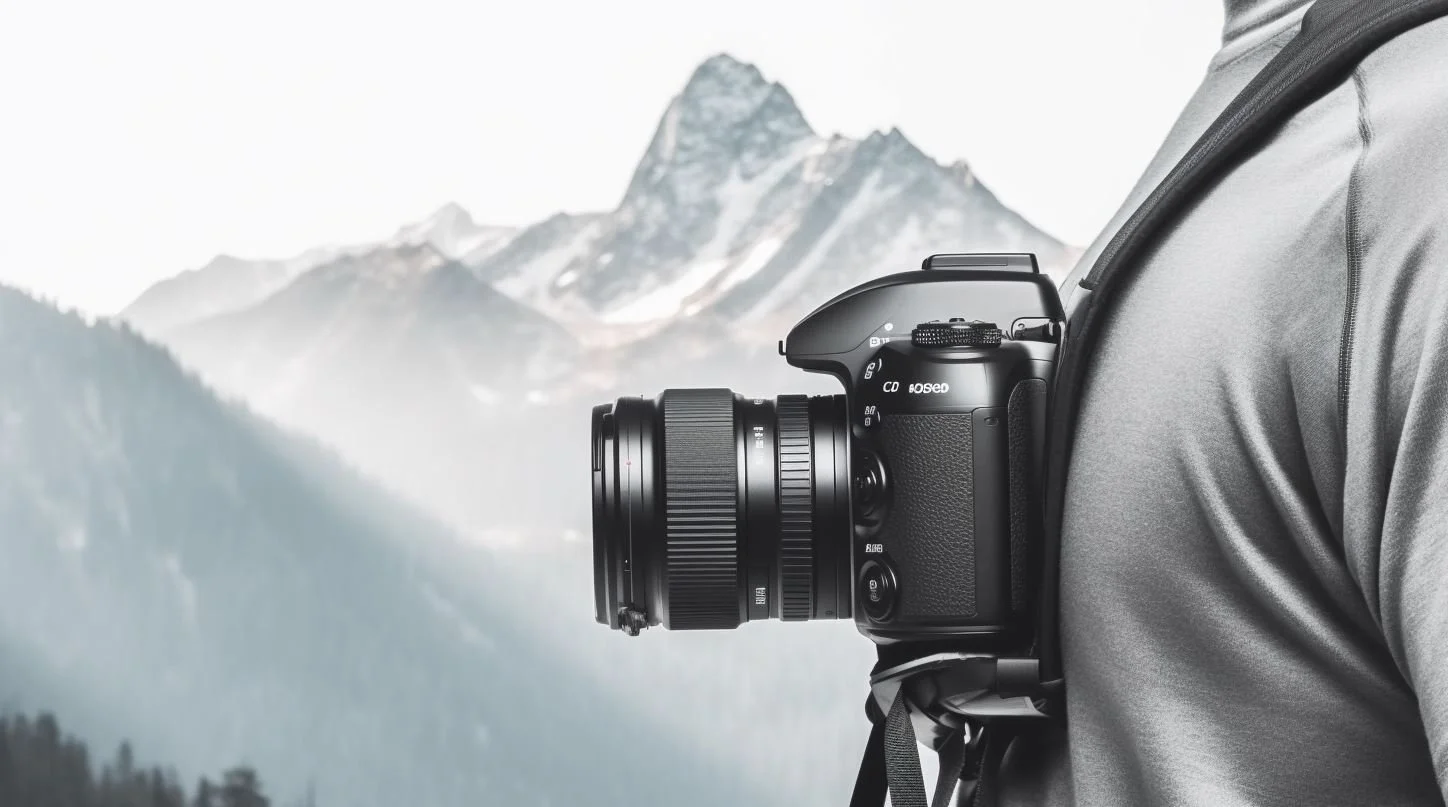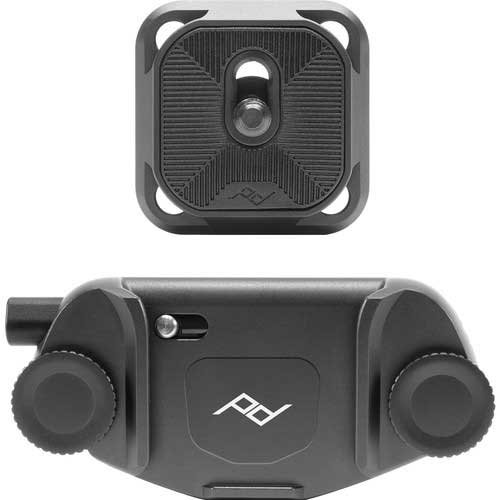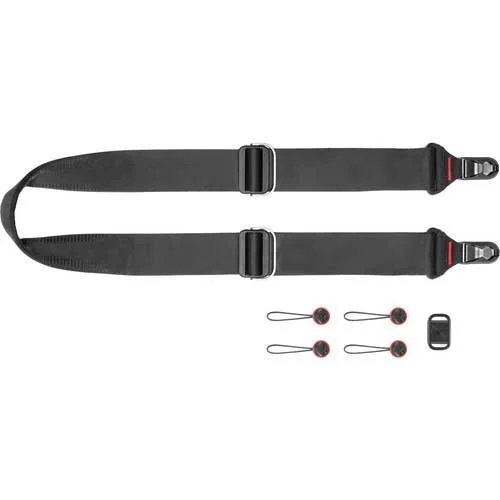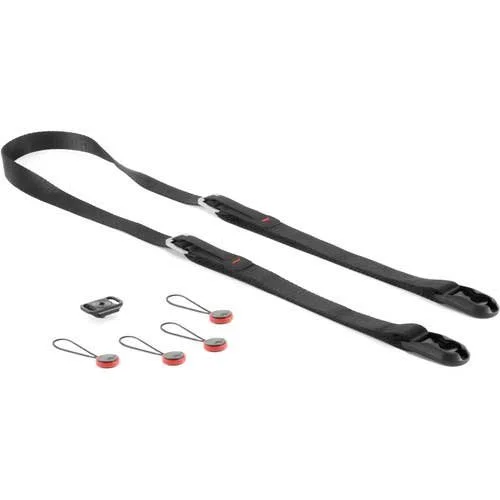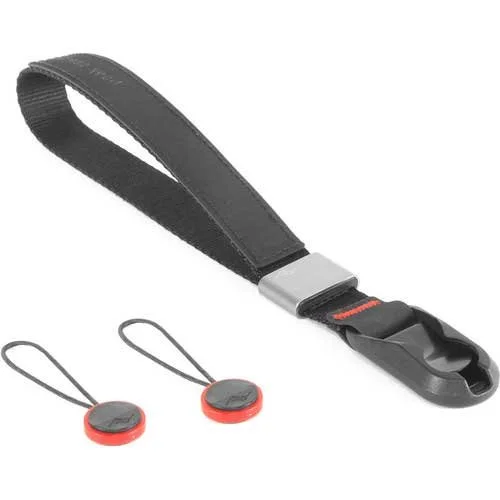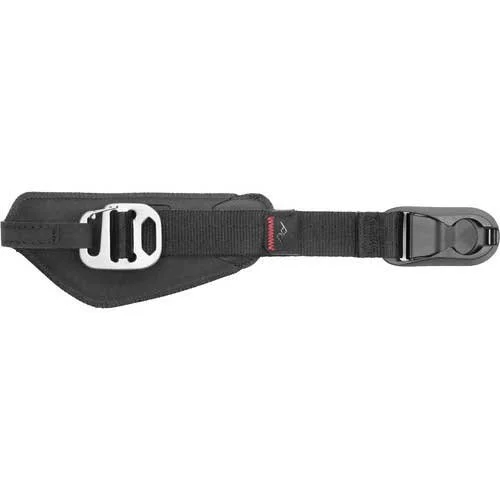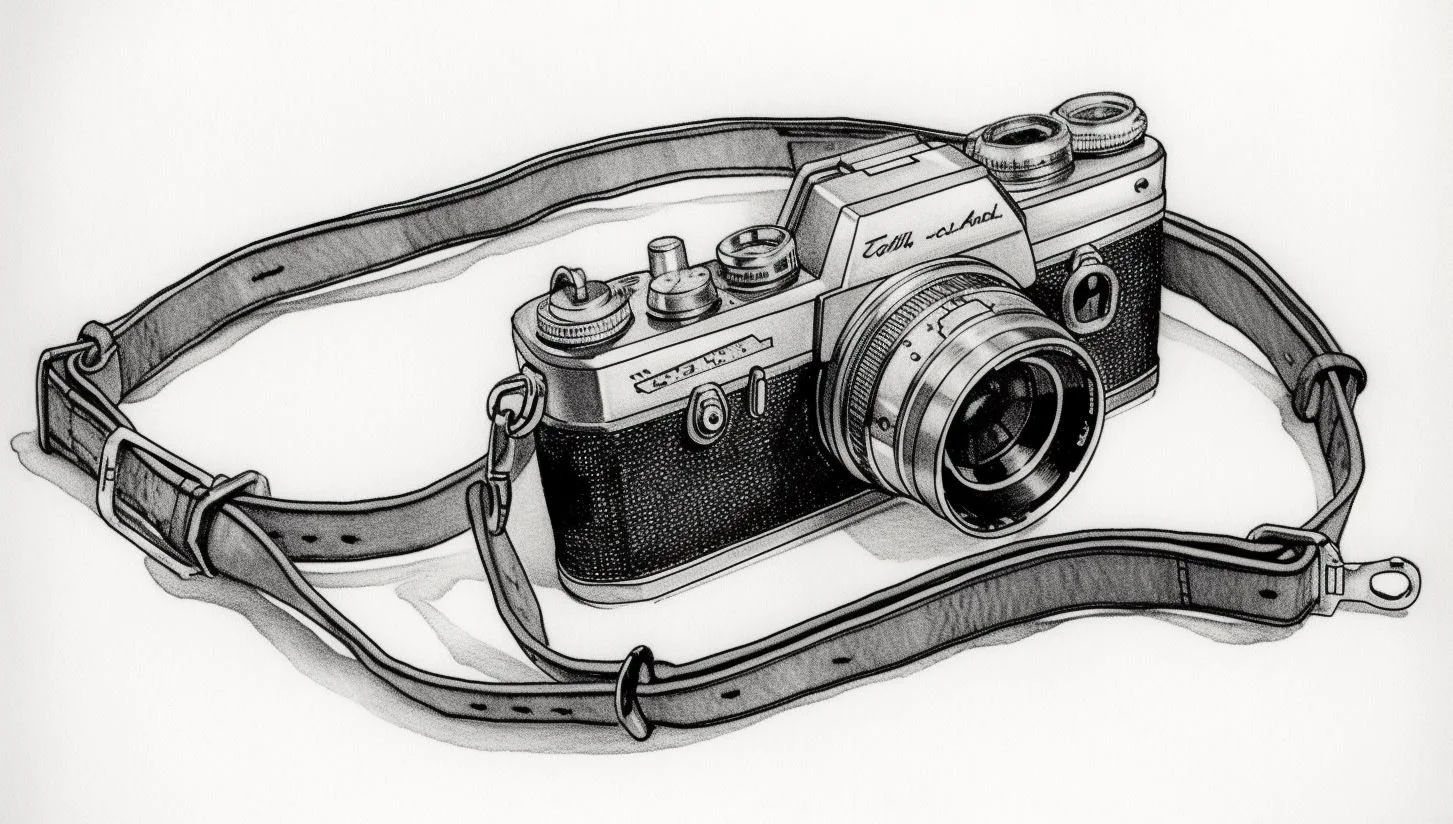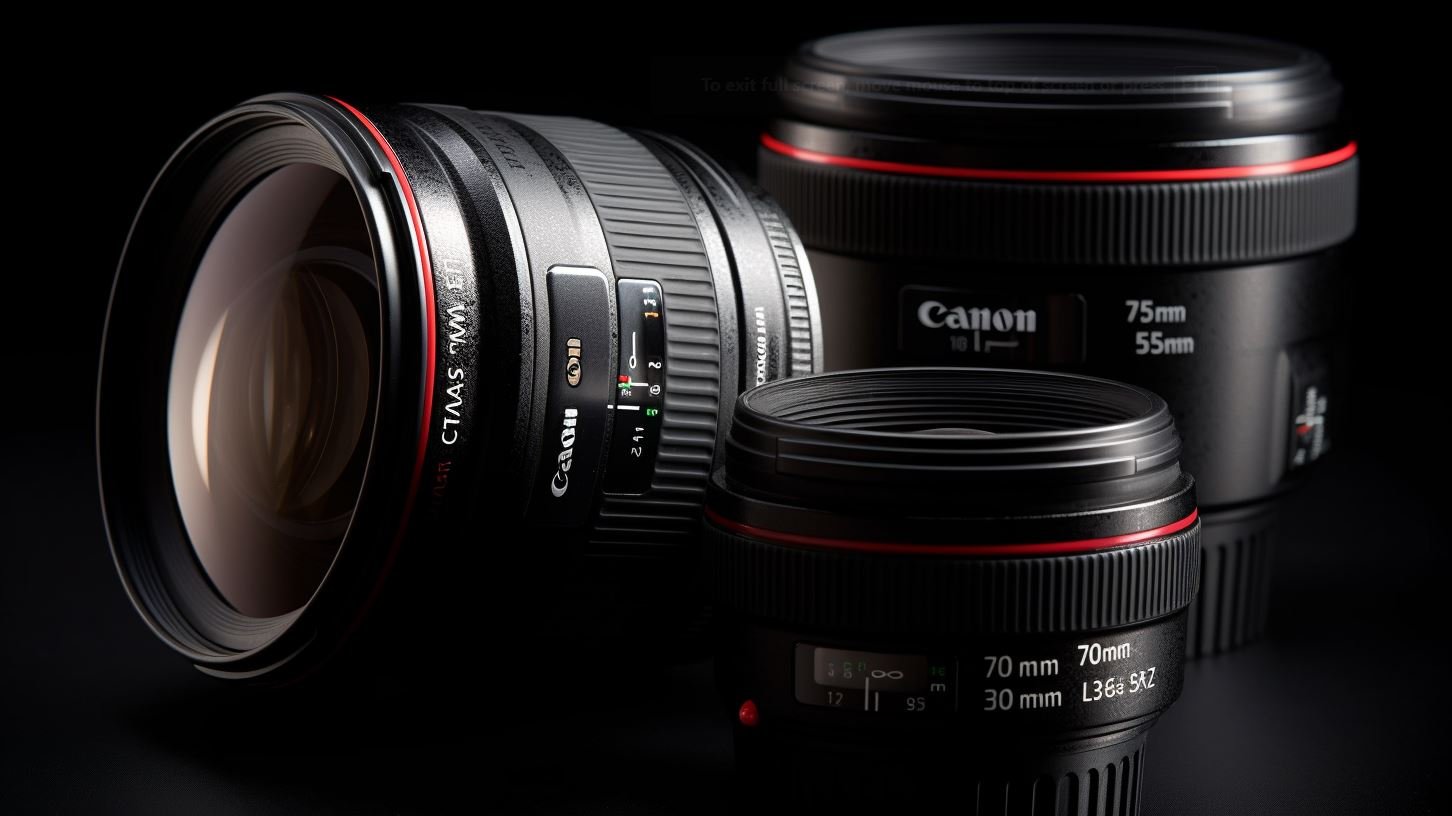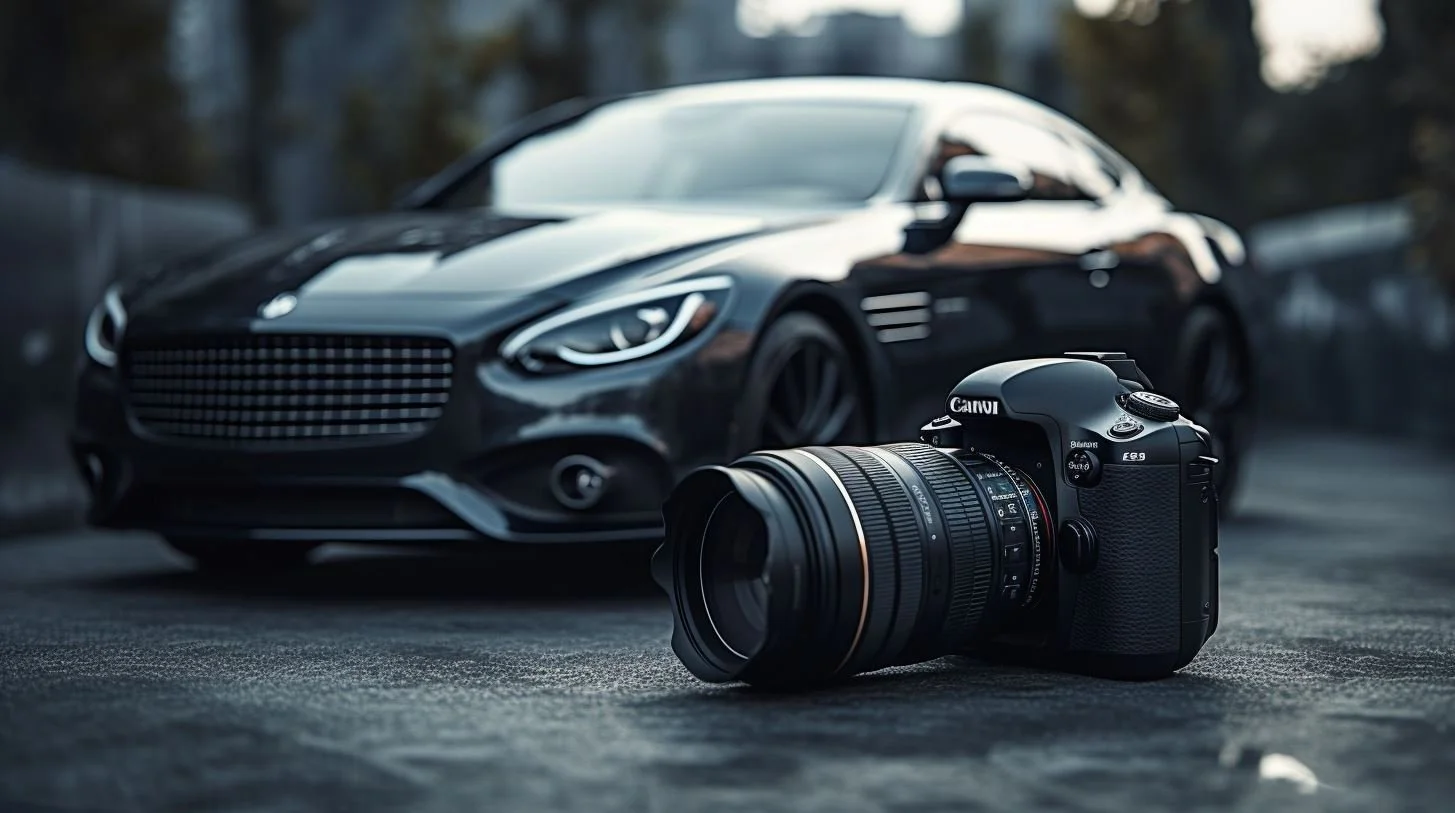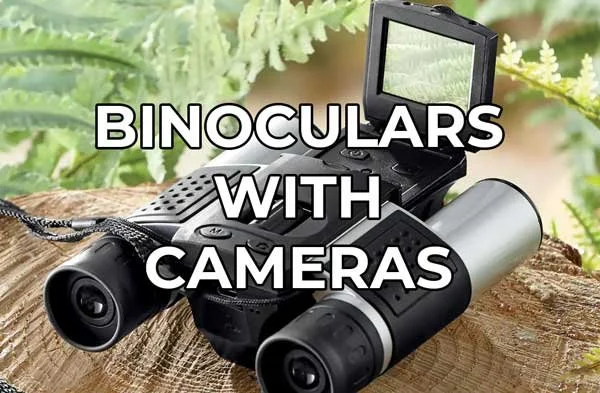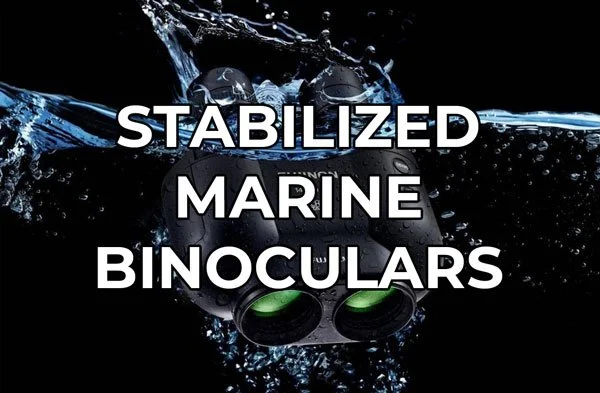Best Camera Strap for Hiking
Optimizing Your Outdoor Photography: A Comprehensive Guide to Selecting the Ideal Hiking Camera Strap
When it comes to hiking with your camera, not just any strap will do.
The ideal camera strap must be a seamless blend of durability, security, comfort, and quick access to meet the unique challenges posed by outdoor photography.
Whether you're scaling steep mountain trails, navigating through dense forests, or simply enjoying a leisurely walk in your local nature reserve, the right camera strap can dramatically improve your experience.
In this comprehensive guide, we will explore the best camera straps designed specifically for hiking.
We will provide you with detailed reviews of five top-rated products, each scrutinized for its performance in various key areas like weather resistance, adjustability, weight distribution, quick access, and security.
To aid in your decision-making process, this post also includes a buyer's guide that delves deep into these essential features.
Stay tuned to discover how you can enhance your hiking and photography experience by choosing the perfect camera strap tailored to your needs.
Disclaimer: This blog post contains affiliate links. If you make a purchase through one of these links, we may receive a small commission at no additional cost to you. This helps support our work and allows us to continue providing valuable content. Thank you for your support!
Quick Links:
Best Camera Straps by Type
Backpack/Belt Holster: Peak Design Capture - Ideal for photographers seeking a secure and hands-free mounting solution for any camera setup.
Neck/Shoulder/Sling: Peak Design Slide - Best suited for photographers requiring a multi-functional, quick-adjusting strap for dynamic shooting environments.
Ultralight Traditional Strap: Peak Design Leash - Perfect for minimalists who value compactness and versatility in a camera strap.
Wrist Strap: Peak Design Cuff - Best for lightweight camera setups and secure against drops.
Hand Strap: Peak Design Clutch - Best for lightweight camera setups and ultrafast transition from carrying to shooting.
Best Camera Strap for Hiking
Best Holster
Peak Design Capture
Secures to backpack strap or belt with instant access with the press of a button. Weatherproof build.
Neck/Sling
Peak Design Slide
Slide offers three-way wearability, smooth glide, anti-slip, and a stable anchor system.
Ultralight
Peak Design Leash
Leash combines compact design with versatility and a robust quick-connect system.
Wrist Strap
Peak Design Cuff
Locking wrist loop, complete with a unique anchor link system for rapid, secure connections.
Hand Strap
Peak Design Clutch
Clutch delivers swift camera access with robust dual attachments for ultimate control.
Peak Design Capture
Design & Build: The Capture camera clip boasts an impressive design that is both functional and aesthetically pleasing. Its all-metal build not only promises durability but also ensures the camera remains stable, making it an ideal companion for avid photographers.
Functionality: One of Capture's standout features is its versatility. Its ability to clamp onto any strap provides flexibility in terms of mounting options. Furthermore, the inclusion of a quick-release plate enhances its functionality, making it convenient for photographers who want their hands free while hiking, but their camera ready to shoot at a moment’s notice.
Weather Resistance: The weatherproofing adds another layer of protection, which is particularly beneficial for hiking photographers. This feature ensures longevity and reliable performance, even in challenging conditions.
Bottom Line: The Capture camera clip is a genius tool that addresses the needs of photographers looking for a secure and convenient way to carry their cameras.
I own one of these and love it. I used to pass up on shots because I didn’t want to put my pack down and dig out my camera. Now, I just push the quick-release button and I’m ready to shoot.
A word of advice: the capture works best with lighter camera setups. My GH5 and Lecia f/2.8 12-35mm weigh about 3 pounds and are perfect. Heavier than 5 pounds and I think the weight on the one strap may cause some discomfort. To fix this, you could try rearranging your pack for even weight distribution across your body.
Peak Design Slide
Design & Feel: Slide is not just any camera strap; its design stands out with a blend of simplicity and efficiency. The option to wear it in three different ways adds to its appeal and caters to varied user preferences.
Material & Grip: The nylon webbing feels premium, and the distinction between the smooth and grippy sides is a thoughtful touch. This ensures that the camera remains stable, regardless of how the strap is worn.
Quick Adjusters: The dual quick-adjusters are particularly noteworthy, making it easy to adjust the strap's length on-the-go, which is crucial for dynamic shooting environments.
Bottom Line: Slide is a well-thought-out product that offers a blend of style and functionality. For those seeking a reliable, adjustable, and aesthetically pleasing camera strap, Slide is an excellent choice.
It excels when paired with a small backpack (35L max) containing food, photo accessories, and maybe a tent. Larger packs will get in the way of shoulder and sling carry options.
Peak Design Leash
Design: Leash's minimalist design is its main attraction. Despite its simplicity, it doesn't compromise on functionality, proving that sometimes less is indeed more.
Versatility: Its ability to be configured as a sling, neck, or other strap types is commendable. This adaptability ensures that photographers can customize it to their liking.
Adjustment Mechanism: The aluminum and Hypalon quick-adjusters are both efficient and user-friendly, allowing for swift length modifications with minimal effort.
Bottom Line: The Leash is a great option for hiking photographers concerned about weight. The Leash is ultralightweight without compromising security or adjustability.
Peak Design Cuff
Design: Cuff's design emphasizes discretion and efficiency. Its low-profile nature ensures that the camera remains close at hand without being cumbersome.
Security: The wrist loop lock is a unique feature that adds an extra layer of security. This ensures that the camera remains safely attached, even in challenging shooting scenarios.
Connectivity: The anchor link system is both robust and intuitive, making it easy to attach and detach the camera swiftly.
Bottom Line: Cuff is a perfect solution for photographers seeking a balance between accessibility and security with a lightweight mirrorless or point-and-shoot camera. The auto-sinching cuff is a nice feature that will save your camera from hitting the ground if you drop it.
Peak Design Clutch
Design: Clutch redefines the traditional hand strap with its modern and ergonomic design. The strap ensures that the camera remains firmly in the user's grasp while also allowing easy access to controls.
Materials: The combination of Hypalon, microfiber, and aluminum not only promises durability but also adds a touch of elegance to the strap.
Attachment Points: The dual attachment system is efficient, ensuring that the camera remains secure while also facilitating swift adjustments.
Bottom Line: The Clutch is the perfect camera strap for photographers who need their camera ready to shoot at all times. It’s best suited for lightweight mirrorless or point-and-shoot cameras, as holding a heavier rig while hiking could be tiresome.
Buyer’s Guide to the Best Wildlife Lens for Nikon Cameras
Selecting the right camera strap for hiking is crucial for photographers who want to capture the best moments of their outdoor adventures without compromising on comfort and security. A poorly designed strap can turn an otherwise exhilarating hike into an inconvenient experience. This comprehensive guide aims to assist you in making an informed decision by evaluating various types of straps and their essential features.
Types of Straps Suitable for Hiking
1. Sling Straps
Pros: Quick access to the camera, weight distributed across the torso.
Cons: May not be suitable for very heavy setups.
Best for: Those who prefer quick camera accessibility and mobility.
2. Harness Systems
Pros: Even weight distribution, multiple cameras can be carried.
Cons: More complex setup, may be overkill for casual hikers.
Best for: Professional photographers with multiple camera bodies.
3. Wrist Straps
Pros: Lightweight, quick access.
Cons: Limited weight distribution, can cause wrist fatigue.
Best for: Light camera setups and shorter hikes.
4. Neck Straps
Pros: Simple design, easy to attach.
Cons: Can be uncomfortable for long durations, not suitable for heavy setups.
Best for: Casual photographers who don't mind the camera hanging in front.
5. Hand Straps
Pros: Secure grip, quick access to controls.
Cons: Limits the hand's range of motion.
Best for: Those who require quick and secure camera handling.
6. Holster Mounts
Pros: Extremely secure, can attach to any strap or belt, offers quick access.
Cons: May not be as comfortable for long durations if carrying heavy camera gear.
Best for: Photographers looking for a multipurpose, secure mounting solution that can be attached to existing straps or belts.
-
When it comes to capturing the great outdoors, your choice of camera strap is almost as important as your choice of camera.
The wrong strap can result in discomfort, fatigue, or even damage to your camera, while the right one can make your experience seamless and enjoyable.
In this comprehensive guide, we delve into the various types of straps suitable for hiking and the key features to consider for each, enabling you to make the most informed decision possible.
Types of Straps Suitable for Hiking
1. Sling Straps
Pros:
Quick access to the camera: Designed for you to easily slide the camera up and down.
Weight distribution: The weight of the camera is distributed across the torso rather than just the neck.
Cons:
Not suitable for heavy setups: The sling design may cause discomfort if your camera and lens combination is particularly heavy.
Best for:
Individuals who need quick camera accessibility while on the move and prefer the weight to be distributed across the torso.
2. Harness Systems
Pros:
Even weight distribution: A balanced load reduces fatigue on long hikes.
Multi-camera setups: Allows you to carry multiple camera bodies and lenses securely.
Cons:
Complexity: Typically involves more buckles, adjustments, and potential points of failure.
May be overkill for casual hikers or simple setups.
Best for:
Professional photographers who may need to carry multiple cameras and lenses for diverse shooting needs.
3. Wrist Straps
Pros:
Lightweight: Usually less material means less weight to carry.
Quick access: The camera is always in your hand, ready to shoot.
Cons:
Limited weight distribution: All of the camera's weight is focused on your wrist, which may cause fatigue.
Not suitable for heavier camera setups due to the weight concentration on the wrist.
Best for:
Those who have light camera setups and are embarking on shorter hiking journeys where quick shooting is needed.
4. Neck Straps
Pros:
Simplicity: Easy to attach and detach, and typically less complicated than other strap types.
Quick Access: Easily bring the camera up from chest level to shoot.
Cons:
Discomfort: The weight of the camera is supported solely by your neck, which may be uncomfortable during longer hikes.
Not suitable for heavy camera and lens combinations.
Best for:
Casual photographers who plan shorter hikes and don't mind having the camera hang in front of them.
5. Hand Straps
Pros:
Secure grip: Ensures that the camera will not accidentally slip out of your hand.
Quick access to controls: Your hand is already positioned to quickly make control adjustments on the camera.
Cons:
Limited range of motion: Your hand is largely committed to holding the camera, making it less free for other tasks.
May become uncomfortable with heavier setups due to the weight being concentrated in the hand.
Best for:
Photographers who want a secure grip on their camera and quick access to controls but don't need to use their hands for other tasks frequently.
6. Holster Mounts
Pros:
Extremely secure: Designed to lock the camera in place until you are ready to use it.
Multipurpose: Can attach to existing belts or straps, offering flexibility in how you carry your camera.
Quick access: Allows for rapid drawing of the camera for quick shooting opportunities.
Cons:
May not be comfortable for extended durations if carrying heavier camera gear.
Learning curve: Takes time to become accustomed to the mechanism for drawing and holstering the camera.
Best for:
Photographers who require a versatile, secure, and quick-access solution for their camera that can integrate with existing carrying systems.
Essential Features to Consider
1. Material
Durability: Opt for high-quality materials like nylon or leather.
Comfort: Padding and breathable material are crucial for long hikes.
-
When choosing a camera strap for hiking, one of the most crucial considerations is the material from which it is made.
The material impacts not only the durability and longevity of the strap but also its comfort and functionality.
In this in-depth guide, we will explore the various materials commonly used in camera straps, examining their pros and cons, and offering insights to help you make an informed decision.
Types of Materials
1. Nylon
Pros:
Durability: Nylon is a synthetic material known for its high tensile strength, making it highly resistant to wear and tear.
Weather Resistance: It possesses good resistance to moisture and adverse weather conditions.
Cons:
Comfort: While durable, nylon may lack the softness and comfort that other materials offer, especially when worn for extended periods.
Best for:
Hikers who prioritize durability and are likely to encounter harsh weather conditions.
2. Polyester
Pros:
Resilience: Polyester is less susceptible to stretching and shrinking compared to natural fibers.
Quick-Drying: It dries quickly, which is advantageous for hiking in variable weather conditions.
Cons:
Heat Retention: Polyester is not breathable and can become uncomfortable in hot conditions.
Best for:
Photographers who require a balance of durability and comfort but are not hiking in extremely hot conditions.
3. Leather
Pros:
Aesthetic Appeal: Leather has a classic, premium look that many find appealing.
Comfort: It tends to become more comfortable over time as it molds to the body.
Cons:
Weather Sensitivity: Leather can be sensitive to moisture and extreme temperatures, which could be a drawback for hiking.
Best for:
Those who prioritize aesthetics and comfort but are cautious about exposure to harsh weather conditions.
4. Neoprene
Pros:
Cushioning: Neoprene offers excellent cushioning and shock absorption.
Water Resistance: It is inherently resistant to water, making it suitable for wet conditions.
Cons:
Weight: The material can be relatively heavy, which may be a concern for longer hikes.
Best for:
Hikers who will be around water or need extra cushioning for their camera equipment.
5. Canvas
Pros:
Breathability: Canvas is a breathable material that can be comfortable for extended wear.
Durability: It is relatively strong and can endure the wear and tear of hiking.
Cons:
Water Absorption: Unlike synthetic materials, canvas can absorb water, making it less suitable for wet conditions.
Best for:
Photographers who prioritize breathability and are hiking in dry conditions.
Essential Features to Consider in Material
Tensile Strength
The material should have high tensile strength to bear the weight of your camera and lens setup without stretching or breaking.
Weather Resistance
Given that hiking often involves exposure to varying weather conditions, the material should have adequate resistance to water and temperature extremes.
Breathability
For longer hikes, a breathable material can prevent discomfort and skin irritation due to sweat and heat.
Texture
The texture of the material can affect the grip and stability of the strap on your shoulder or across your body. Some materials may offer built-in grip features for added security.
Maintenance
Consider how easy it is to clean the material and whether it requires any special care to maintain its properties.
Weight
The material's weight can contribute significantly to your overall carrying weight, which is an essential factor for longer hikes.
By carefully considering these factors, you'll be well-equipped to choose a camera strap material that meets your hiking needs.
2. Adjustability
A quick and easy adjustment mechanism can make a significant difference in your hiking experience.
-
When it comes to selecting a camera strap for hiking, the adjustability of the strap is a paramount consideration.
The ability to easily adjust the length and positioning of your camera strap can greatly affect your overall hiking experience.
This comprehensive guide will delve into the various elements of adjustability to consider, providing a framework for making an informed decision.
Types of Adjustability Features
1. Length Adjustability
Pros:
Versatility: Allows the strap to be adapted for various body sizes and types of clothing.
Multi-Position Use: Enables the strap to be configured as a neck strap, shoulder strap, or cross-body sling, depending on your needs.
Cons:
Complexity: Some adjustment mechanisms can be complex and require time to master.
Best for:
Individuals who may need to switch between various carrying styles or share the strap with others of different sizes.
2. Quick-Adjust Levers or Pull Tabs
Pros:
Speed: Allows for instant length adjustment, which is especially useful for quickly switching between shooting and carrying positions.
Ease of Use: Generally simple to operate even with one hand.
Cons:
Potential Weak Points: Quick-adjust mechanisms may introduce additional potential failure points where the strap could potentially break or malfunction.
Best for:
Photographers who require the ability to rapidly adjust their camera's position, especially those who switch frequently between shooting and other activities like climbing or navigating terrain.
3. Modular or Convertible Designs
Pros:
Customizability: Allows the strap to be configured in multiple ways, for example, as a wrist strap, sling strap, or even a dual-camera harness.
Scalability: Enables the strap to adapt to different types of equipment setups.
Cons:
Complexity: Can be more complex to adjust and may require additional time to switch between configurations.
Best for:
Those who have diverse needs and want a single strap that can be adapted for various scenarios.
4. Padded vs. Non-Padded Zones
Pros:
Comfort: Padded areas can be adjusted to align with pressure points for greater comfort.
Load Distribution: Helps in spreading out the weight of the camera, especially beneficial during longer hikes.
Cons:
Bulk: Padding adds extra material, which could be a concern for minimalist hikers or those with limited space.
Best for:
Individuals going on extended hikes where comfort and load distribution are crucial.
5. Locking Mechanisms
Pros:
Security: Locking mechanisms ensure that once adjusted, the strap will not slip out of position.
Stability: Helpful in maintaining the camera's position, particularly during more strenuous activities.
Cons:
Complexity: May require additional time to lock and unlock, slowing down adjustments.
Best for:
Hikers in more demanding terrains where keeping the camera secure and stable is critical.
Essential Factors to Consider in Adjustability
Reliability
The adjustability features should be reliable and robust enough to withstand the rigors of hiking.
Intuitiveness
The adjustment mechanisms should be intuitive to operate, as complicated systems could be cumbersome when you need to adjust the strap quickly.
Adaptability
Consider how adaptable the strap is for multiple configurations or lengths, which can be especially valuable if you intend to use the camera for different types of shooting while hiking.
Speed
The speed with which you can make adjustments is crucial, especially in scenarios where you have to swiftly transition from a walking to shooting position.
Ergonomics
Ease of use and the ability to adjust with a single hand can be significant advantages, as they allow you to focus more on your hike and photography rather than fumbling with your strap.
By understanding these aspects of adjustability, you are better equipped to select a camera strap that will meet your needs while hiking.
3. Weight Distribution
A strap that distributes the camera weight evenly will minimize fatigue during long hikes.
-
Weight distribution is a key factor when choosing a camera strap for hiking.
A poorly designed strap can result in muscle strain, fatigue, and discomfort, potentially affecting your ability to focus on capturing great photographs.
This guide provides an in-depth look at the different aspects of weight distribution to consider when choosing a camera strap for hiking.
Types of Weight Distribution Features
1. Wide Straps vs. Narrow Straps
Pros:
Broad Surface Area: Wider straps distribute the weight over a larger surface area, reducing pressure on any single point.
Cons:
Bulk: Wider straps can be bulkier and may take up more space in your bag.
Best for:
Hikers carrying heavier camera equipment for extended periods.
2. Padded Straps
Pros:
Increased Comfort: Padding can cushion the load, making it feel lighter than it actually is.
Cons:
Heat and Sweat: Padded straps may not breathe as well, which can lead to increased sweating and discomfort.
Best for:
Long-duration hikes where the extra padding can minimize fatigue.
3. Cross-Body Straps or Sling Straps
Pros:
Balanced Load: Cross-body straps distribute the camera’s weight across the body, which can improve overall balance.
Cons:
Impaired Access: They can interfere with accessing other gear like backpacks or hydration packs.
Best for:
Hikers who want an even weight distribution across the upper body and are willing to navigate potential access issues.
4. Dual-Point Attachments
Pros:
Greater Stability: By attaching the camera at two points, usually one on each side of the camera, the weight distribution is balanced.
Cons:
Complexity: The system can be more complicated to set up and adjust.
Best for:
Those who are carrying heavier or larger camera setups and want added stability.
5. Multi-Camera Systems
Pros:
Symmetrical Distribution: Allows for even weight distribution by carrying multiple cameras, one on each side.
Cons:
Complexity and Bulk: More gear equals more complexity and weight, potentially requiring additional harnesses or belts.
Best for:
Professional photographers who require quick access to multiple cameras with different lenses.
Essential Factors to Consider in Weight Distribution
Material Choice
The material of the strap can influence weight distribution. For example, elasticized materials may offer more give, but can also result in bouncing, which may impact the perception of weight.
Anchor Points
The location where the strap attaches to the camera can also affect weight distribution. Anchoring the strap to a camera’s tripod mount as opposed to the sides of the camera can change the center of gravity and influence how the weight is distributed across your body.
Adjustability
Being able to adjust the strap length can help you fine-tune weight distribution, ensuring the camera sits at a comfortable and ergonomically efficient position.
Consistency
A strap that retains its adjustability features under load is crucial. Straps that slacken under the weight can result in uneven distribution, leading to discomfort over time.
By giving due consideration to these aspects of weight distribution, you can make an informed choice, ensuring your hiking and photography experience is as comfortable and efficient as possible.
4. Quick Access
Look for a strap that allows you to quickly bring the camera to eye level without complex adjustments.
-
When hiking, the need for quick access to your camera is paramount.
Opportunities for capturing stunning vistas or wildlife can come and go in the blink of an eye. Thus, the type of camera strap you choose should facilitate immediate and convenient access to your camera.
This guide examines the various features and mechanisms that contribute to quick access in camera straps suitable for hiking.
Types of Quick Access Features
1. Quick-Release Mechanisms
Pros:
Enables you to quickly detach the camera from the strap.
Cons:
Potential for accidental release if not properly secured.
Best for:
Photographers who need to frequently switch between handheld shooting and strap-supported carrying.
2. Swivel Hooks
Pros:
Allows for 360-degree rotation, providing flexibility in camera positioning.
Cons:
Can be prone to wear and tear if not made of durable materials.
Best for:
Hikers who want their camera to adapt to various positions without the need to adjust the strap.
3. Sliding Systems
Pros:
The camera can slide along the strap for quick movement from resting to shooting position.
Cons:
If the locking mechanism fails, the camera may slide unexpectedly, potentially leading to damage.
Best for:
Individuals who need their camera at eye level in an instant for quick shots.
4. Retractable Systems
Pros:
Allows you to pull the camera into shooting position and automatically retracts it back when not in use.
Cons:
Mechanical components can wear out and may not be as durable as non-retractable systems.
Best for:
Photographers who need to quickly secure their camera after shooting to free their hands for other tasks.
5. Clip or Holster Systems
Pros:
Enables quick clipping and unclipping of the camera from a belt or backpack strap.
Cons:
Requires a compatible belt or strap for secure attachment, which might limit options.
Best for:
Those who prefer to have their camera attached to a stationary point rather than a moving strap.
Essential Factors to Consider for Quick Access
Material Flexibility
Stiff materials may hinder quick access to the camera, while more flexible materials might ease the transition from carrying to shooting position.
Locking Features
For quick-release mechanisms, an effective locking feature is crucial to prevent accidental releases that can result in damage to the camera.
Strap Length
The length of the strap can significantly affect how quickly you can bring the camera to eye level. Too long a strap might cause delays, while too short a strap may restrict movement.
Weight Impact
A heavier camera may affect the ease with which you can access it. While the strap itself can be designed for quick access, the camera's weight can counteract this feature.
By understanding these quick-access features and considerations, you can better assess which type of camera strap will best meet your needs for immediate camera access during hiking expeditions.
5. Security
A reliable locking mechanism ensures that your expensive gear is safe while you navigate challenging terrains.
-
Security is a paramount concern when choosing a camera strap for hiking.
A secure strap not only safeguards your valuable camera from accidental drops but also offers protection against quick snatch-and-grab thefts.
The following guide dives into the key features and factors to consider that specifically pertain to the security aspect of a camera strap suitable for hiking.
Types of Security Features
1. Dual Locking Mechanisms
Pros:
Provides redundancy in case one lock fails or is accidentally released.
Cons:
Extra steps might be necessary for quick detachment.
Best for:
Hikers who want an added layer of protection and don't mind spending a few extra seconds to unlock their cameras.
2. Secure Anchoring Points
Pros:
Anchor points that offer tight, secure connections reduce the chance of the camera detaching.
Cons:
May require additional tools or time to install or remove.
Best for:
Hikers who want a semi-permanent attachment of the camera to the strap, reducing the risk of accidental detachment.
Essential Factors to Consider for Security
Material Durability
The durability of the material, particularly its resistance to wear and tear, affects the strap's long-term security. Heavy-duty nylon, for instance, might offer more security than thin, cotton straps.
Adjustment Locks
Straps that have a locking mechanism to prevent accidental length adjustments offer a more secure fit, ensuring the camera stays at a predictable height.
Load Capacity
The strap should have a load capacity that well exceeds the weight of your camera and attached lens to ensure it doesn't break under stress.
Mechanical Versus Manual Locks
Mechanical locks might offer quicker release but also require regular inspections to ensure they are functioning correctly. Manual locks, like screw locks, may offer higher security but might be slower to operate.
Weather Resistance
Weather-resistant materials and components can protect against the added strain that elements like rain and dirt can impose on the strap's security features.
By carefully evaluating these security features and essential factors, you will be better equipped to choose a camera strap that meets your specific needs for both quick access and high security while hiking.
6. Weather Resistance
Waterproof or water-resistant features are highly beneficial for outdoor photography.
-
Weather resistance is an essential criterion when selecting a camera strap for hiking, as outdoor photography inherently exposes your gear to various environmental conditions.
This guide comprehensively examines the weather-resistant features you should consider in a camera strap for hiking.
Types of Weather-Resistant Features
1. Water-Resistant Coating
Pros:
Provides a layer that repels water, preventing it from soaking into the material.
Cons:
May wear off over time and require reapplication.
Best for:
Hikers who will encounter light to moderate rain but not fully submerge the strap.
2. Waterproof Materials
Pros:
Completely prevents water from permeating the material.
Cons:
Usually heavier and less breathable than water-resistant options.
Best for:
Those who will be hiking in heavy rain or near bodies of water where the strap might become submerged.
3. UV Resistance
Pros:
Protects the strap material from deteriorating due to prolonged exposure to sunlight.
Cons:
May not be as crucial for those who primarily hike in overcast conditions.
Best for:
Hikers in sunny climates or those who will be spending extended periods outdoors.
4. Anti-Microbial Treatment
Pros:
Prevents the growth of mold and mildew, which can occur in damp conditions.
Cons:
Effectiveness may diminish over time, requiring additional treatment.
Best for:
Individuals hiking in humid or tropical environments.
5. Dust and Sand Resistance
Pros:
Special coatings or tightly woven materials prevent fine particles from entering and abrading the strap.
Cons:
Might not be fully breathable, potentially reducing comfort.
Best for:
Hikers in arid or dusty environments, or near beaches.
Essential Factors to Consider for Weather Resistance
Material Type
Different materials offer varying levels of weather resistance. For example, nylon and polyester are generally more weather-resistant than natural fibers like cotton.
Seams and Stitching
Seams should be reinforced or sealed to prevent water or dust from entering. The quality of stitching is crucial as weaker stitches can unravel when wet.
Hardware Material
Metal hardware should be rust-resistant, especially when considering a strap for use in wet or salty environments. Plastic hardware should be UV-resistant to avoid becoming brittle in the sun.
Breathability
While weather resistance is important, breathability should not be entirely sacrificed, as this can lead to discomfort during prolonged use. Some materials balance both needs effectively.
Layering
Some straps feature multiple layers with different properties, such as a water-resistant outer layer and a breathable inner layer, providing balanced protection.
By considering these weather-resistant features and factors, you'll be equipped to make an informed decision when selecting a camera strap that will stand up to the environmental conditions you expect to encounter while hiking.
Product Recommendations
Capture by Peak Design
Type: Holster
Best for: Photographers seeking a secure and hands-free mounting solution.
Slide by Peak Design
Type: Sling Strap
Best for: Professional-level photography with quick-adjusting needs.
Leash by Peak Design
Type: Versatile Strap
Best for: Minimalists and light travelers.
Cuff by Peak Design
Type: Wrist Strap
Best for: Shorter hikes and quick shooting scenarios.
Clutch by Peak Design
Type: Hand Strap
Best for: Photographers requiring quick camera control and secure handling.
Conclusion
Selecting the right camera strap for hiking is more than just a matter of personal preference; it's about optimizing your outdoor photography experience.
We've reviewed five products, each excelling in crucial areas like durability, comfort, security, and quick access.
Our comprehensive buyer's guide has further equipped you with the knowledge needed to make an informed decision, focusing on essential features such as weather resistance, adjustability, weight distribution, and more.
In summary, the right camera strap can be a game-changer for your hiking adventures, enabling you to capture stunning images while minimizing discomfort and risk.
We hope this guide has been invaluable in helping you identify the best camera strap for your specific needs and hiking conditions. Now, all that's left is for you to hit the trails and put your chosen strap to the test.

